Other
Working with Top Talent to Develop Your Photography Portfolio
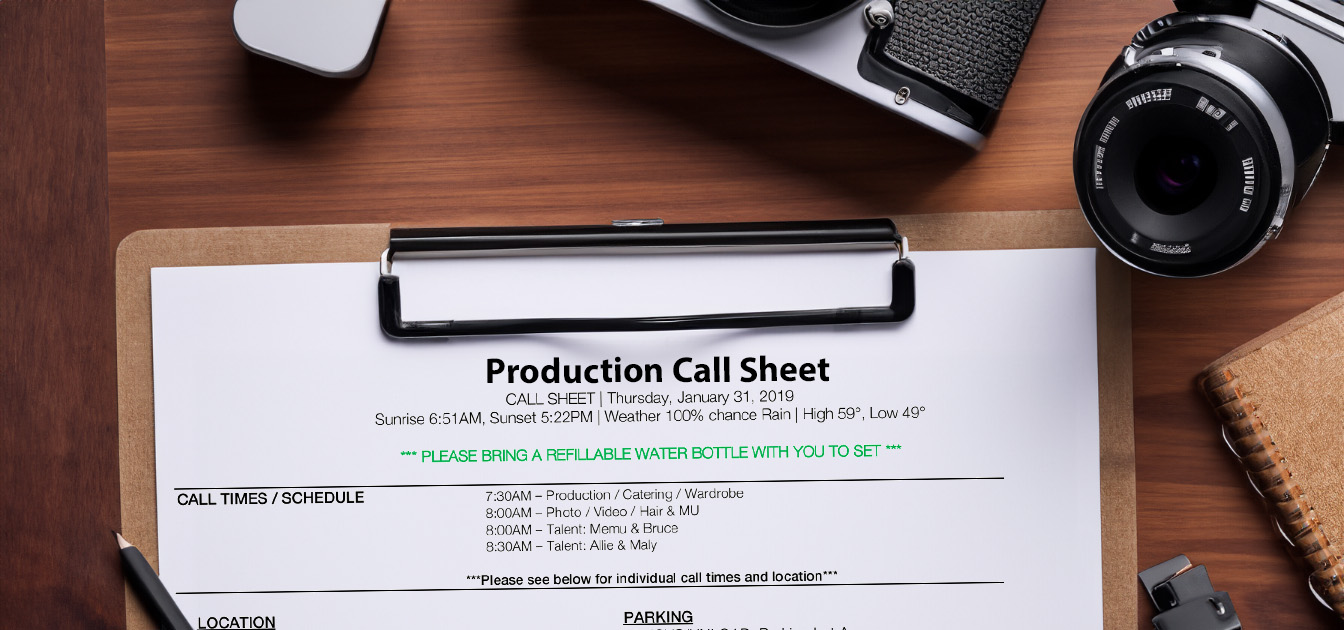
Over the past decade, I’ve had several opportunities to work with some incredible talent in the modeling, acting, and music space. And while I’m proud of the work I’ve done, I’m often asked how I got the opportunity to work with such people. Well, the short answer is a lot of hard work and strategic marketing…but I think the long answer might be more worthwhile, so let’s dive into it.
My intent of this article is to talk about working with agencies specifically and will be tailored to modeling agencies, but the same information should apply to any talent agency. Celebrity work is a little different though – as most of the work needs to have a purpose beyond just “New Photos!”. You’re often working with a PR agent, a publication, and many times, a creative director – only to have a few minutes with the celebrity in question. These types of jobs are specialized, and so general information doesn’t usually apply to them. So instead, let us look at modeling agencies and talent agencies.
Modeling Agencies
Modeling agencies have several purposes within the industry which include – pitching work for models, organizing their portfolios, negotiating rates for jobs, and most importantly, vetting clients and assuring their safety. Because of the encompassing tasks of managing several models, working with a modeling agency to build your portfolio might seem like a cumbersome task, but it’s really not. When working with an agency-signed model, I always prefer working through the agency to set up a shoot, instead of DMing the model on a social media platform. This helps the model feel comfortable and helps establish credibility, as it’s a test shoot set up by their agency.
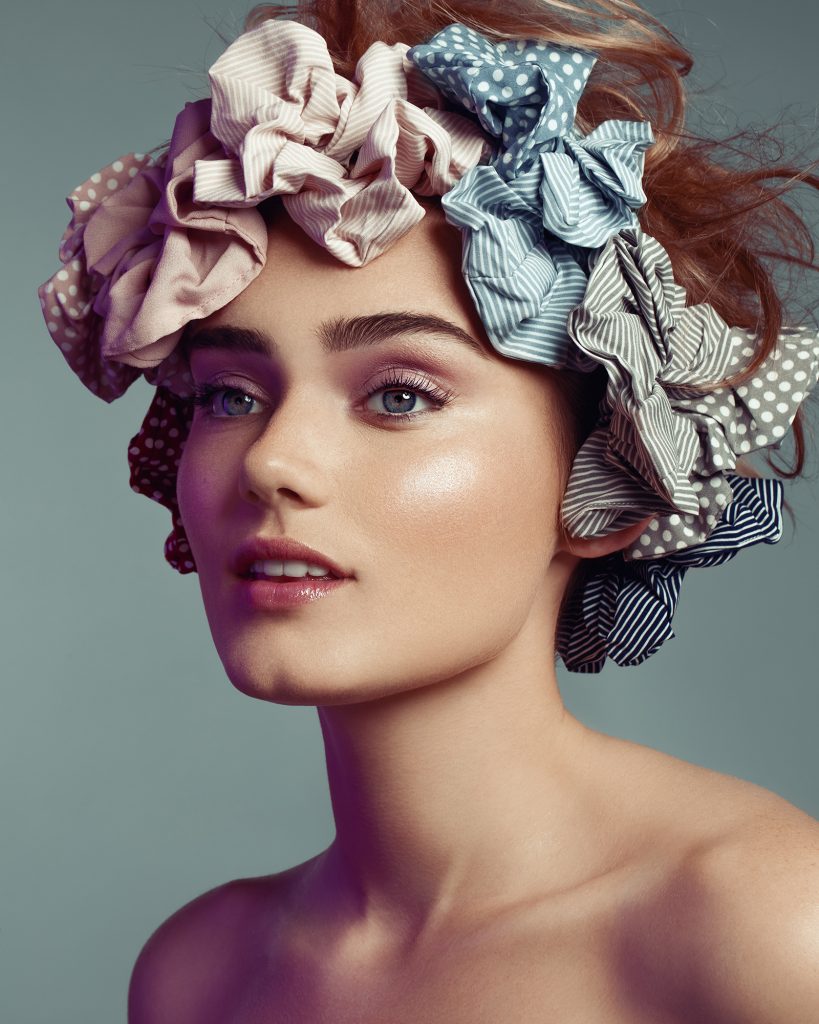
How to contact an agency for a portfolio-building photoshoot (which I’ll often refer to as a test shoot throughout this article), can happen in many ways. More often than not, the agency will often have an email you can contact on their website. If you choose this avenue, be prepared with a nicely laid out portfolio of your work, and inspiration as to what you want to achieve (often called a concept board). I often keep the email short and tell the agency I’d love to work with their talent, show them some of my work, and what I’m hoping to achieve in a nicely laid out format (we’ll discuss that).
The second option would be to call the agency, tell them you’d like to work with some of their talent to build and update your portfolio and ask to set up a meeting with one of the agents. If they agree, I then begin putting together a portfolio of my work that would show them a diversity of my skills, while having a cohesive style and theme. If you’re looking to build a portfolio of dramatic in-studio portraits, don’t show them your work from the wedding you shot this past summer. And if you’re looking to shoot lifestyle work for your portfolio, don’t show them the photos you took of your friend’s new Mustang. Keep the portfolio tight and focused – usually showing 15-20 different images that exemplify your talents as a photographer.
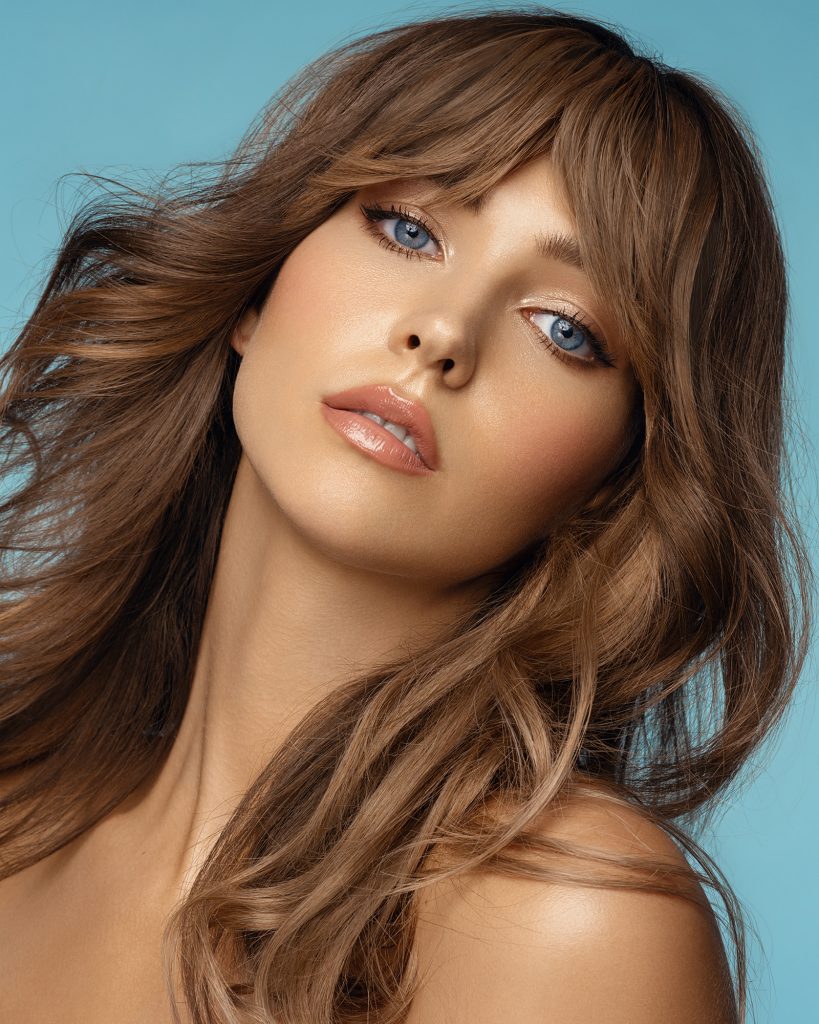
For this portfolio display, you can do it in one of several ways. You can take the time to print the work (11×14 is a standard print portfolio size) to show them. While this is flashier, it’s not always the most practical of options, as printing costs quite a bit of money, and the work you display should always be evolving and changing as your skills and access to talent improve. The second option is to show a digital portfolio. Many photographers will use this as an opportunity to highlight their website, but I prefer to build a custom portfolio that fits within the theme of the work. For digital portfolios that are not on my website or Instagram, I really like to build them quickly using Pixieset.
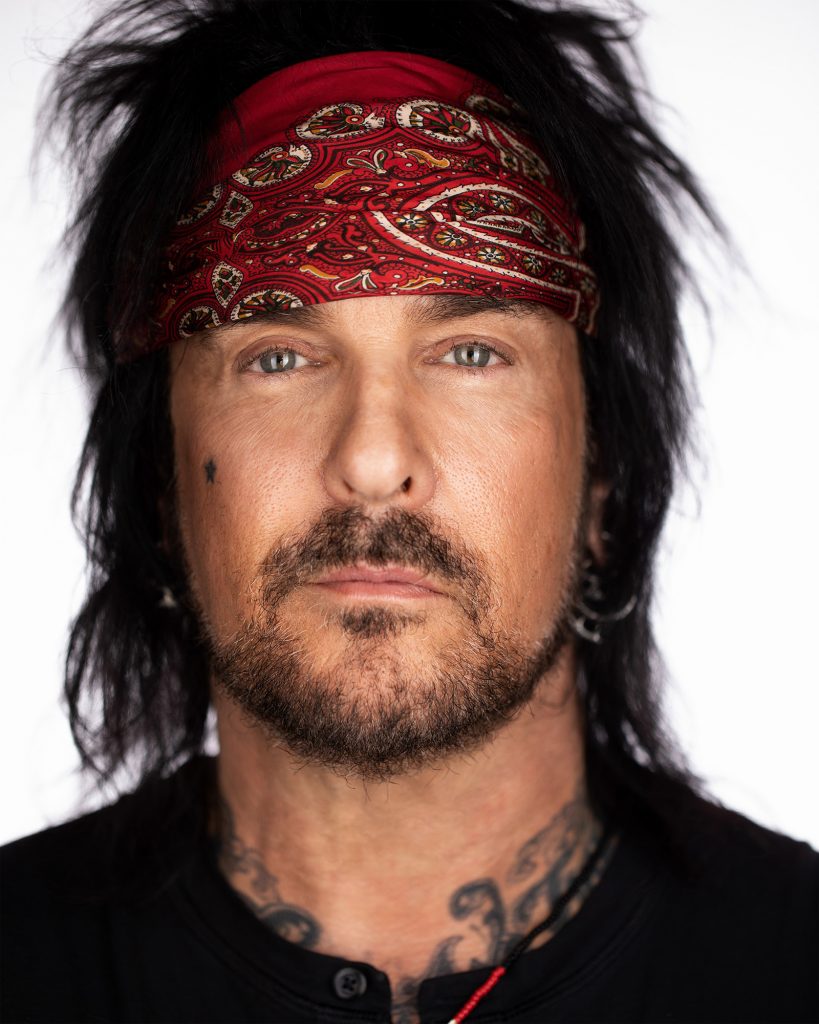
Next, the meeting would be simply to establish a relationship with the talent agent. The better the relationship and trust, the more likely they are going to send you their best talent to work with. Express what you hope to accomplish with your photography, and ask the agent what they are hoping to achieve with their work. Build a relationship where they understand your intentions, and express your ability to create.
Assuming the email, phone call, or meeting goes well, the agency will likely send you a package of models available for a test shoot. To start, this is often a package of “New Faces’ – which are simply models who are newly signed to the agency or are building their portfolio into other markets. This is always a great opportunity to work with some up-and-coming talent, and as the trust with the agent/agency grows, you’ll get more access to more of their veteran talent.

After receiving a package of available models, I will find one or two of the models I’d like to work with and start building a concept board for the shoot. More often than not, I’ve already sent the agency a concept board before they send a package of available models, as they can better tailor their package of talent to fit the theme – but for all of my shoots, a concept board is developed before the shoot.
Concept Boarding
For concept board development, there are a few tools that make the development of concept boards really simple – the first is the forgotten social media gem known as Pinterest. Pinterest’s search function for finding photos is incredibly powerful and makes building out concepts easy. For example, I’m largely a beauty photographer, so if I wanted to do a test shoot that was a beauty-focused shoot using dramatic lighting and a bright red lip, I could type “dramatic lighting, red lipstick” into the search. From there, I can go through the neverending scroll of images, select my favorites, and put them into a separate Pinterest board to eventually send to the agent.

The second option is to download your inspiration photos and use a collage editor to build a jpeg with the various looks you’d like to shoot. For this, I’ll often use software called BlogStomp – which makes building out photo collages simple. Using these tools, I’ll often build out 2-3 looks to try for the shoot and organize them to eventually send them to the agency.
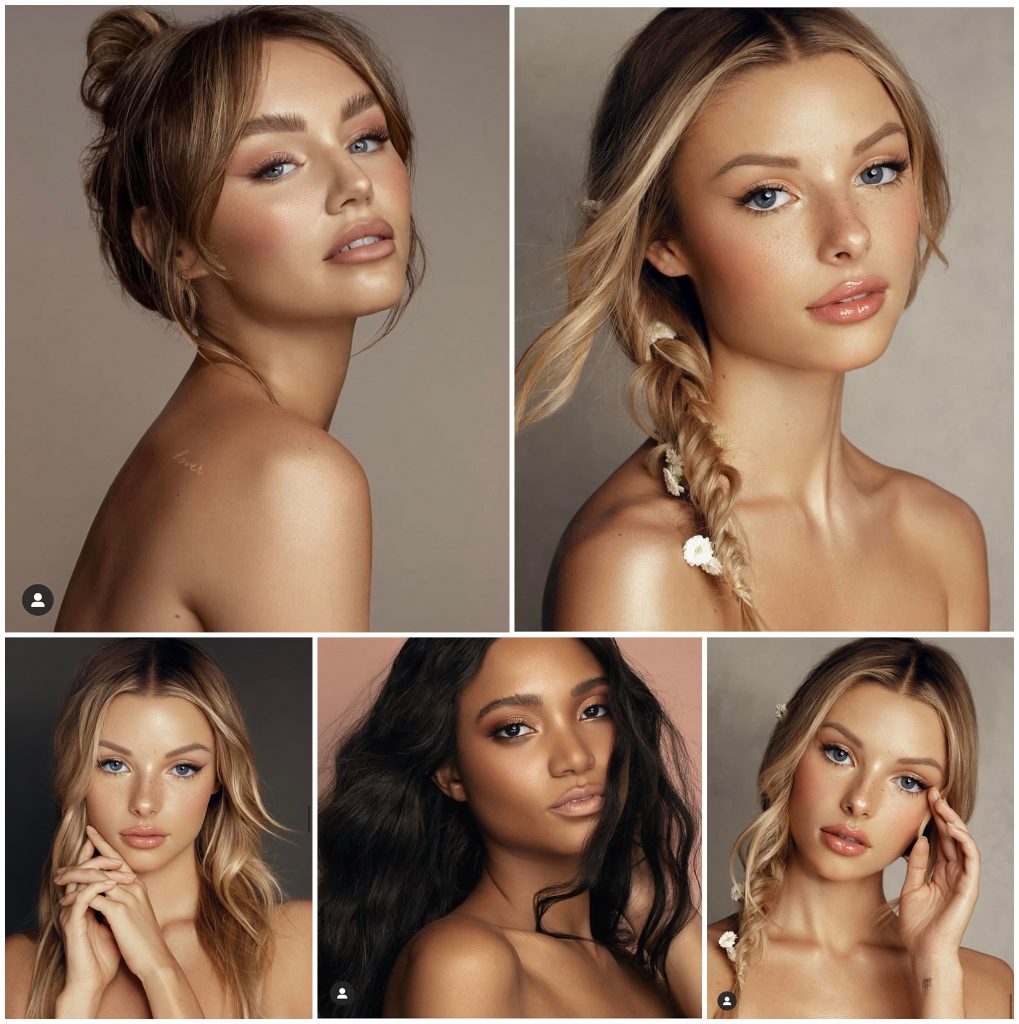
Building a Team to Establish Credibility
The next step, though this is in part to my work, is to build out a team to help with the shoot. For me, I shoot largely beauty photography, so a makeup artist and hair stylist are often a must for my shoots. But if you’re a fashion photographer, a stylist might be your most important asset. If the work you’re doing could be improved with the help of a stylist or makeup artist, I will generally try to find one before booking the shoot. To do this, I often use Instagram, find talented people in my area, and tell them I’d like to work with them on a test shoot. If they agree, I will often send them the package of models sent to me, as well as my concept board to see what they think. They may have their own preferences and style choices, so it’s important to collaborate when you can to get the best outcome. While calling it a test shoot will often imply that this is done for portfolio building and no money is exchanged, a kit fee might be brought up. A kit fee is a small fee to cover the cost of expendables (hair spray, makeup, etc etc). From there, presuming they agree to work together, I’ll pick my talent from the package the agency sent, and email them expressing my interest, my concept (if not shared already), and my availability. If all goes well on that end, they’ll ask you to send a call sheet for the shoot.
Building a Call Sheet
The next step in this process is to build a call sheet to send to the agency, which they will then forward to the model. A call sheet can be as simple or as complex as you want it to be, but should contain a few key things – A date and time for the shoot, who will be at the shoot, and their basic information, an address to the location, and any information that subject might need to help better prepare for the shoot. For the test shoot, I usually just send an email with that information. But for larger shoots, I’ll often build a call sheet using platforms like StudioBinder or Simple Call Sheet. Below is an email I’ll typically use as my backbone for what I send to the agency, and ask them to let me know if they need additional information.
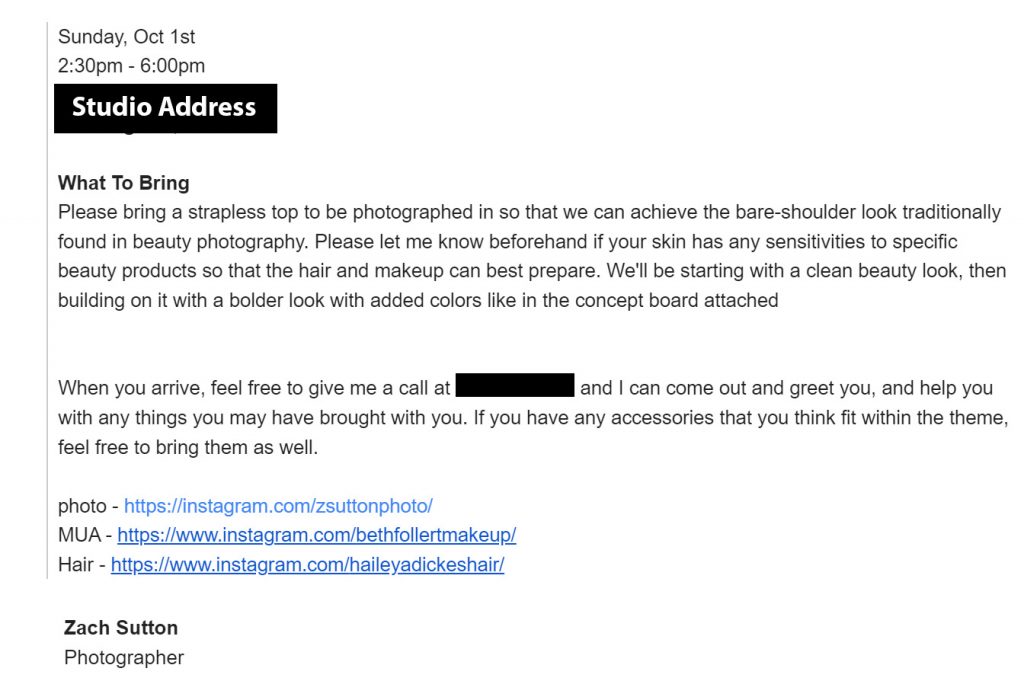
Typically if the shoot is something larger than what I would shoot in my personal studio, I will use the above-mentioned platforms to build more official-looking call sheets, but for basic photoshoots, agencies have never seemingly had a problem with an email like this.
Prepping For The Shoot & Wrap
Because this is a test shoot, not a lot of prep is required leading into the shoot. Per normal circumstances, I try to keep my studio (or shooting space) neat and tidy so that the subject and team feel welcome. I also make sure to have a few bottles of water on hand to offer if anyone gets thirsty during the shoot. From there, just photograph at the best of your ability, and deliver the photos to the agency and team (with credit to those involved) when you have the photos completed. Establish a good rapport with the team and agency, and after a few sessions, you should be able to request individual models on the agency’s website.
And that’s largely it. While the process can seem complicated to those who have never worked with an agency before, it’s really as easy as the few steps I laid out here. If you want a more detailed explanation of how to build a successful brand using the photos from these test shoots, be sure to check out the podcast episode from a few years ago, where I go over that process. Have any questions on this process? Feel free to chime in with the comments section below.
Related Reading
- The Lensrentals Podcast – BEST OF: How to Make Money Shooting Portraits
- Lensrentals.com Reviews the FujiFilm GFX 100S
- How the Light Placement Alters Your Subjects
- Advanced Photography Lighting Techniques – Feathering & Zooming
Author: Zach Sutton
I’m Zach and I’m the editor and a frequent writer here at Lensrentals.com. I’m also a commercial beauty photographer in Los Angeles, CA, and offer educational workshops on photography and lighting all over North America.-
Mr Rohit
